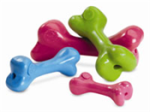You and your love-bug are cuddling when suddenly, you notice an odor. Someone needs a bath and it isn’t you! If you’re short on time, don’t have the right tools or lack patience and dog grooming experience, it’s time to call in a professional. Dog groomers provide many services for your dog including bathing, brushing, clipping, nail care and ear care. Reasons to see a professional groomer include:
• Convenience. There’s nothing like dropping off the furry one and picking up a soft, clean, sweet-smelling dog.
• Comfort for your dog. Professional dog groomers know how to make your dog cooperate for nail trimmings or ear cleanings without hurting him.
• Professional products. The right tools and products get the job done easily.
• Detection of injuries or parasites. Your dog will be given a thorough inspection for cuts or open wounds which will be treated prior to any service. A groomer can also alert you to external parasites and treat your dog accordingly.
• Information on keeping your dog looking good. A professional groomer will give you tips, not only on your dog’s grooming, but also on how to care for him on a daily basis.
How to Choose a Groomer
Where you take your dog for his grooming can make a big difference in how he’s treated. Ask vets, trainers and pet supply store owners for recommendations. Before booking an appointment, go to the facility and look for the following:
• Cleanliness
• Friendly and knowledgeable staff
• Gentle and kind treatment of dogs
• Area where dogs are kept before and after grooming
• Atmosphere, not too loud, hot, cold or uncomfortable
Desert Dry Puff & Fluff
If you’re in the Albuquerque area, stop by Dawg Gone Good located in Nob Hill on Central at Wellesley, and check out our new grooming services. Our feet, face and fanny services are eco-friendly (no water needed) and cage- and kennel-free. Wait for your dog or leave him with us–after his service he can relax in our doggie play area. For more information and reservations, call 505-508-2704.





























